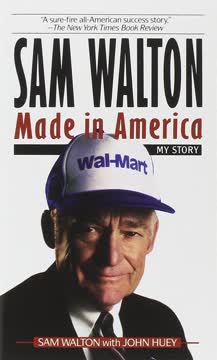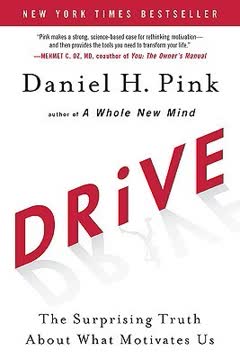Key Takeaways
1. Build a strong company culture based on core values
We believe that it's really important to come up with core values that you can commit to. And by commit, we mean that you're willing to hire and fire based on them.
Culture is your brand. A strong company culture, defined by core values, is the foundation for long-term success. At Zappos, core values weren't just words on a wall, but principles that guided every decision and action. They developed 10 core values, including "Deliver WOW Through Service," "Embrace and Drive Change," and "Be Humble," which became the heart of their culture.
To reinforce the culture:
- They created a Culture Book with unedited employee contributions
- Hiring decisions were based on cultural fit, not just skills
- They were willing to fire employees who didn't embody the values
- Core values were integrated into performance reviews and daily operations
By prioritizing culture, Zappos created a unique identity that attracted like-minded employees and customers, ultimately becoming their strongest competitive advantage.
2. Deliver exceptional customer service to drive growth
At Zappos, we think it's important for people and the company as a whole to be bold and daring (but not reckless).
Service as a marketing strategy. Zappos built its brand primarily through word-of-mouth, driven by exceptional customer service. They viewed every customer interaction as an opportunity to create a lasting positive impression, rather than a cost to be minimized.
Key elements of their customer service approach:
- 24/7 customer service with no call time limits
- 365-day return policy with free shipping both ways
- Surprise upgrades to overnight shipping
- Empowering employees to go above and beyond for customers
- Training all employees, regardless of position, in customer service
By investing in customer happiness rather than traditional advertising, Zappos created loyal customers who became brand advocates, fueling sustainable growth and profitability.
3. Embrace change and take calculated risks
We must all learn not only to not fear change, but to embrace it enthusiastically and, perhaps even more important, encourage and drive it.
Adaptability drives success. Zappos' journey was marked by constant evolution and willingness to take risks. From shifting their business model to carry inventory, to relocating the entire company to Las Vegas, they weren't afraid to make bold moves when necessary.
Examples of embracing change:
- Transitioning from drop-shipping to inventory ownership
- Moving headquarters from San Francisco to Las Vegas
- Developing their own warehouse management system
- Continually refining their hiring and training processes
Hsieh emphasizes that the ability to adapt quickly is crucial in a rapidly changing business environment. By fostering a culture that encourages experimentation and views mistakes as learning opportunities, Zappos was able to stay ahead of the competition and seize new opportunities.
4. Focus on employee happiness and development
Our goal at Zappos is for our employees to think of their work not as a job or career, but as a calling.
Happy employees, happy customers. Zappos prioritized employee satisfaction and growth, believing that engaged employees would naturally provide better customer service. They created an environment where employees felt valued, challenged, and part of something bigger than themselves.
Key aspects of their employee-focused approach:
- Extensive training programs for all employees
- Career development paths within the company
- Fun and quirky office environment
- Empowering employees to make decisions
- Offering to pay employees to quit if they weren't a good fit
By investing in their employees' personal and professional growth, Zappos built a dedicated workforce that was passionate about the company's mission and values, leading to higher productivity and better customer experiences.
5. Prioritize long-term vision over short-term profits
We're willing to make short-term sacrifices (including lost revenue or profits) if we believe that the long-term benefits are worth it.
Build for the future. Zappos consistently made decisions based on long-term value creation rather than short-term financial gains. This approach sometimes put them at odds with investors seeking quick returns, but ultimately allowed them to build a sustainable and valuable business.
Examples of long-term thinking:
- Offering free shipping and returns despite the cost
- Relocating to Las Vegas for long-term hiring advantages
- Investing in company culture and employee development
- Turning down acquisition offers to maintain independence
- Developing the Brand-Culture-Pipeline (BCP) strategy
By focusing on building a strong foundation and brand reputation, rather than chasing quarterly profits, Zappos was able to achieve sustainable growth and ultimately reach $1 billion in gross merchandise sales faster than expected.
6. Create alignment between all stakeholders
We realized I was relearning another version of the same lesson from LinkExchange, when our company culture went downhill: the importance of alignment.
Unified vision drives success. Hsieh learned the critical importance of aligning the interests of all stakeholders - employees, customers, investors, and partners. Misalignment, particularly with the board of directors, can lead to conflicts that threaten the company's culture and long-term vision.
Steps to create alignment:
- Clearly communicate the company's vision and values
- Seek investors and board members who share the company's philosophy
- Be transparent about goals and decision-making processes
- Structure incentives to reward long-term thinking
- Foster open communication between all levels of the organization
The eventual acquisition by Amazon was seen as a solution to achieve full alignment, allowing Zappos to maintain its culture and vision while accessing greater resources and creating value for shareholders.
7. Be passionate and pursue a higher purpose beyond profit
We thought of Zappos as being more high-touch, and Amazon as being more high-tech.
Purpose drives passion. Zappos' success was driven by a commitment to a higher purpose beyond just selling shoes or making money. They aimed to deliver happiness to customers, employees, and eventually to other businesses through their insights and training programs.
Manifestations of their higher purpose:
- Developing Zappos Insights to share their culture-building methods
- Public speaking engagements to inspire other businesses
- Creating a movement around customer service and company culture
- Viewing Zappos as a platform to change the world of business
By pursuing this larger mission, Zappos was able to attract passionate employees and customers who believed in their vision. This sense of purpose created a deeper connection with stakeholders and drove the company to continually innovate and improve, even after achieving significant financial success.
Last updated:
FAQ
What's Delivering Happiness: A Path to Profits, Passion, and Purpose about?
- Tony Hsieh's Journey: The book details Tony Hsieh's path from childhood entrepreneurship to leading Zappos, a billion-dollar online shoe retailer.
- Happiness in Business: It emphasizes the role of happiness for customers, employees, and stakeholders, suggesting that a happy workplace enhances performance and success.
- Three Pillars: The narrative is structured around profits, passion, and purpose, arguing that businesses can achieve financial success while fostering a culture of happiness.
Why should I read Delivering Happiness?
- Inspiring Leadership: Tony Hsieh's insights into leadership and company culture offer valuable lessons for business leaders.
- Real-Life Examples: The book is rich with anecdotes from Hsieh's life and Zappos' journey, providing relatable and engaging content.
- Practical Advice: Hsieh provides actionable advice on creating a positive work environment and building a successful business.
What are the key takeaways of Delivering Happiness?
- Happiness Drives Success: Focusing on the happiness of employees and customers leads to greater business success.
- Embrace Change: The book encourages adaptability and openness to change, crucial for navigating entrepreneurship.
- Build a Strong Culture: Establishing a strong company culture based on core values is essential for attracting and retaining talent.
What are the best quotes from Delivering Happiness and what do they mean?
- “There’s a difference between knowing the path and walking the path.”: Emphasizes the importance of action over mere knowledge.
- “A great company is more likely to die of indigestion from too much opportunity than starvation from too little.”: Warns against overextending a business.
- “You can’t stop the waves, but you can learn to surf.”: Encourages resilience and adaptability in the face of challenges.
How does Tony Hsieh define happiness in Delivering Happiness?
- Happiness as a Strategy: Happiness is a key component of a successful business strategy, enhancing productivity and engagement.
- Core Values: Aligning personal and company values fosters happiness and a supportive work environment.
- Customer Experience: Prioritizing customer satisfaction builds loyalty and drives sales.
What challenges did Tony Hsieh face while building Zappos?
- Financial Struggles: Hsieh faced financial challenges, especially during economic downturns, requiring tough decisions.
- Cultural Shifts: Maintaining the original company culture became difficult as Zappos grew.
- Operational Issues: Hsieh had to adapt the business model to address logistics and inventory management challenges.
What is the significance of the Zappos culture in Delivering Happiness?
- Core Values: Zappos' culture is built around ten core values guiding employee behavior and decision-making.
- Employee Empowerment: Empowering employees to make decisions leads to greater job satisfaction and commitment.
- Customer-Centric Approach: Exceptional customer service is integral to Zappos' success, with employees encouraged to ensure customer happiness.
How does Tony Hsieh suggest businesses can create a culture of happiness?
- Define Core Values: Clearly define and communicate core values that reflect in every aspect of the company.
- Encourage Open Communication: Foster an environment where employees feel comfortable sharing ideas and feedback.
- Invest in Employee Development: Provide opportunities for personal and professional growth to enhance job satisfaction.
How does Delivering Happiness address the concept of failure?
- Learning from Mistakes: Failure is an essential part of the entrepreneurial journey, offering opportunities for learning and growth.
- Resilience: Encourages resilience in the face of setbacks, with perseverance leading to eventual success.
- Redefining Success: Challenges traditional notions of success, focusing on happiness and fulfillment over financial gain.
What role does storytelling play in Delivering Happiness?
- Building Connections: Storytelling connects with readers and illustrates key concepts through personal anecdotes.
- Cultural Reinforcement: Stories about Zappos' journey reinforce the company's culture and values.
- Inspiring Action: Hsieh's stories inspire readers to take action in their own lives and businesses.
How does Zappos approach customer service according to Delivering Happiness?
- Customer-Centric Philosophy: Zappos prioritizes customer service as a core aspect of its business model.
- Empowerment of Employees: Customer service representatives are empowered to enhance the customer experience without strict scripts.
- Surprise and Delight: The company often goes above and beyond, such as offering surprise upgrades, to create memorable experiences.
What is the significance of the Zappos Culture Book mentioned in Delivering Happiness?
- Employee Contributions: The Culture Book compiles employee reflections on Zappos culture, showcasing diverse perspectives.
- Transparency and Growth: It serves as a tool for transparency, allowing employees to express thoughts and contribute to culture.
- Recruitment Tool: The Culture Book attracts potential employees by providing insight into the company’s values and environment.
Review Summary
Delivering Happiness receives mostly positive reviews, with readers praising Hsieh's candid storytelling and insights into building a successful company culture. Many find the book inspiring and appreciate its focus on creating happiness for employees, customers, and vendors. Some criticize the writing style or find certain sections less relevant. Readers appreciate the personal anecdotes and business lessons, though a few feel the book becomes less engaging towards the end. Overall, it's considered a valuable read for entrepreneurs and those interested in company culture.
Similar Books










Download PDF
Download EPUB
.epub digital book format is ideal for reading ebooks on phones, tablets, and e-readers.





